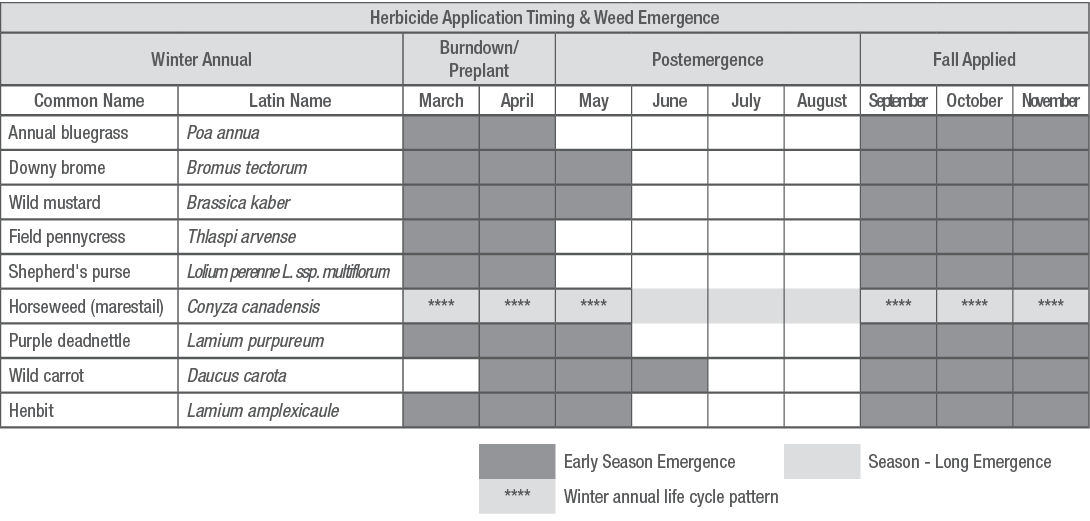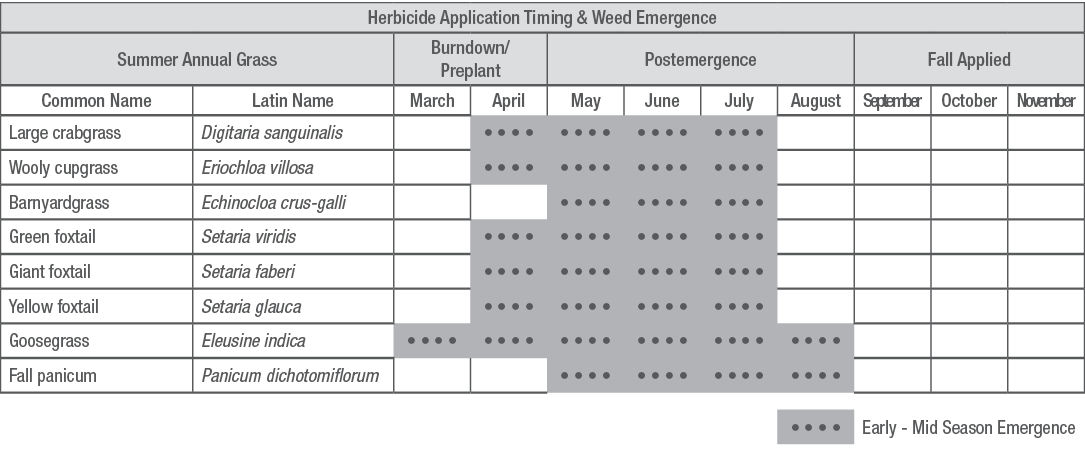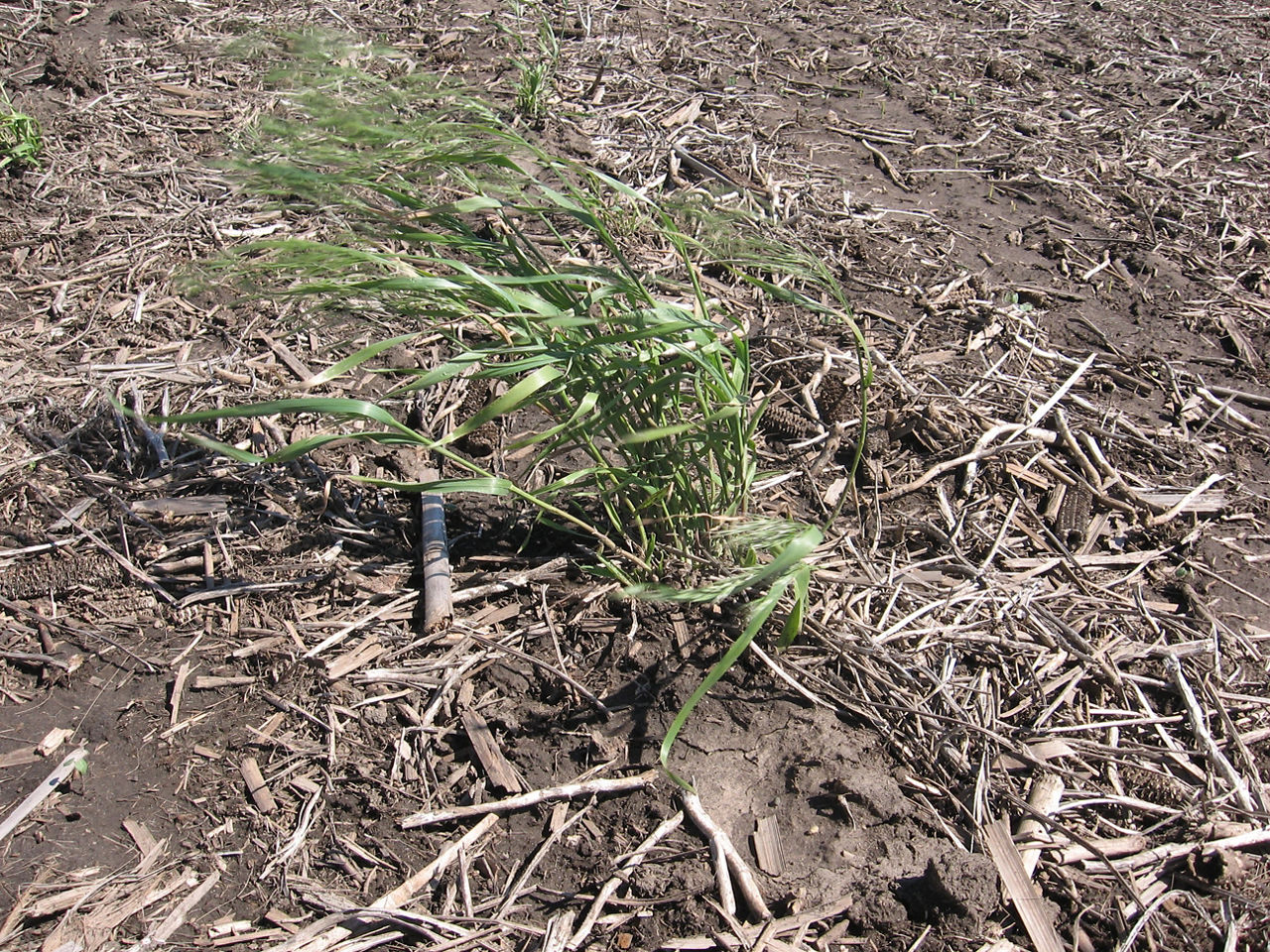12 MIN READ
Weed Calendar for the Corn Belt
June 9, 2021
The differences in emergence characteristics of weed species are one of the reasons why weed management is such a difficult task. Knowing when weeds emerge can help improve weed management systems by increasing scouting efficiency and help determine optimum weed control tactic timing (seedbed prep, herbicide application, cultivation, etc).
Weed emergence sequence of common troublesome annual weed species in the Corn Belt growing region.



Identification










)

Sources:
Aneson, N., Striegel, S. and Werle, R. Giant ragweed. Grow IWM. http://growiwm.org.
Bradley K. 2018. Morning glory management in soybean. Take Action Herbicide Resistance Management. Http://iwilltakeaction.com.
Curran, W.S. and Klodd, A. 2014. Invasive pigweeds: Palmer amaranth and waterhemp. Penn State Extension. http://extension.psu.edu.
Doll, JD. 2001. Knowing when to look for what: Weed emergence and flowering sequences in Wisconsin. Department of Agronomy. UW-Madison Wisconsin. http://extension.soils.wisc.edu.
Hartzler, RG. 2008. Relative emergence sequence for weeds of corn and soybean. Iowa State University. http://www.extension.iastate.edu/.
Pittman, K. Horseweed. Grow IWM. http://growiwm.org.
Sprague, C. 2020. Palmer amaranth management in soybeans. Take Action Herbicide Resistance Management. http://iwilltakeaction.com.
Steckel, L. 2019. Barnyardgrass management in soybeans. Take Action Herbicide Resistance Management. http://iwilltakeaction.com.
1027_i1
The differences in emergence characteristics of weed species are one of the reasons why weed management is such a difficult task. Knowing when weeds emerge can help improve weed management systems by increasing scouting efficiency and help determine optimum weed control tactic timing (seedbed prep, herbicide application, cultivation, etc).
Weed emergence sequence of common troublesome annual weed species in the Corn Belt growing region.

Seed Brands & Traits
Crop Protection
Disclaimer
Always read and follow pesticide label directions, insect resistance management requirements (where applicable), and grain marketing and all other stewardship practices.
©2024 Bayer Group. All rights reserved.